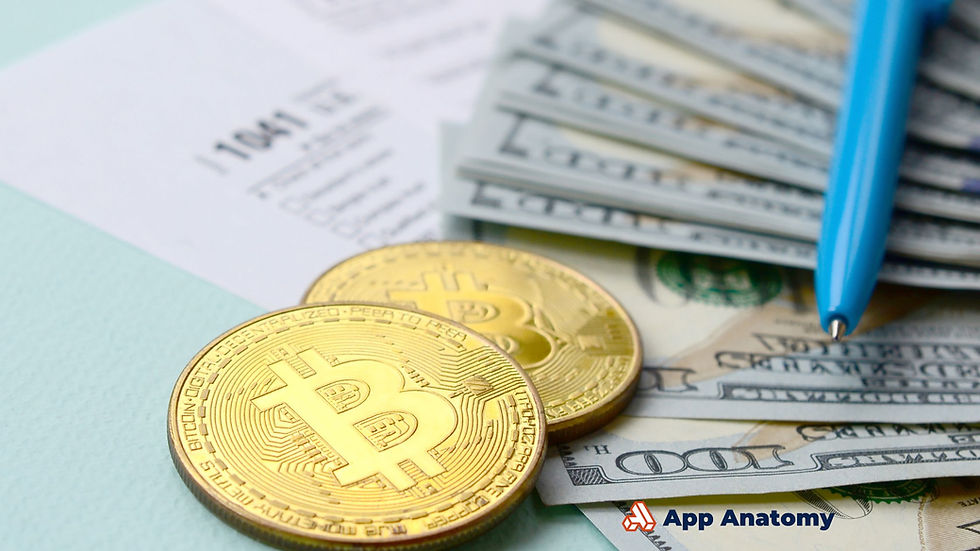How to Start Investing in Crypto: A Beginner’s Step-by-Step Guide
- Aug 17
- 4 min read

Cryptocurrency has gone from niche to mainstream in just over a decade. What started with Bitcoin is now a global asset class with millions of investors, thousands of coins, and entire ecosystems built on blockchain technology.
So why is everyone talking about it?
Because crypto offers something different, decentralization, innovation, and the potential for high returns. But let’s be honest: it’s also risky, volatile, and confusing for first-time investors.
What You Will Learn In This Article
The biggest risks of investing in cryptocurrency and how to avoid beginner mistakes
How to choose a trusted crypto exchange and what features matter most
The difference between hot and cold wallets, and how to store your coins securely
Which cryptocurrencies to start with and why diversification matters
How to spot scams, fake projects, and keep your funds protected
Actionable tips for building a smart, safe, and long-term crypto investing strategy
Step 1: Understand the Risks First
Before you buy your first Bitcoin or altcoin, take a moment to understand what you’re getting into.
Crypto Is Highly Volatile
Prices can swing 10–20% in a single day. That’s exciting when it’s going up, but painful when it drops.
Unlike traditional stocks, crypto doesn't close on weekends or holidays. It’s a 24/7 market, and things can change fast.
No Guarantees or Insurance
Crypto isn’t backed by a government. If your account gets hacked or a project disappears, there’s no FDIC insurance or bank to call.
That’s why security is so important (more on that later).
Regulatory Uncertainty
Crypto rules vary by country and can change quickly. Some coins might be banned or regulated tomorrow, which could impact your investment.
Scams and Fake Projects
Crypto is full of legitimate projects, but also rug pulls, fake apps, and phishing scams. Always research before you invest.
Bottom line: Know the risks before you commit your cash.
Step 2: Choose the Right Exchange
To buy crypto, you’ll need to create an account with a crypto exchange, like a stock market for digital assets.
Popular Exchanges to Consider:
Coinbase – Beginner-friendly, based in the U.S., solid reputation
Binance – Huge variety of coins and features
Kraken – Strong security and transparency
Gemini – Regulated in the U.S., good for casual users
What to Look For:
Ease of use – Is the app or website simple to navigate?
Fees – Some platforms charge more than others for trading
Security features – Two-factor authentication, cold storage, etc.
Coin selection – Can you buy what you’re looking for?
Reputation – Google reviews, Reddit discussions, and user feedback
Expect KYC (Know Your Customer)
Most legit exchanges will ask for ID and personal info to verify your identity. This helps prevent fraud and is required by law in many places.
Step 3: Get a Wallet
Once you’ve bought crypto, you need to store it safely. That’s where wallets come in.
Hot Wallets (Online)
These are connected to the internet and are usually built into exchanges or apps.
Pros: Easy to use, great for beginners
Cons: More vulnerable to hacks
Examples: Coinbase Wallet, Trust Wallet, MetaMask
Cold Wallets (Offline)
These store your crypto on a physical device or offline file, making them super secure.
Pros: Great for long-term storage
Cons: Less convenient, costs money (hardware wallets ~$50–$100)
Examples: Ledger Nano, Trezor
Custodial vs. Non-Custodial
Custodial wallets = the exchange holds your keys
Non-custodial wallets = you control your keys (more secure)
Tip: “Not your keys, not your coins.” If security matters to you, consider moving funds to a wallet you control.
Step 4: Smart Investing in Crypto: Coins, Strategy, and Caution
Now for the fun part: choosing what to buy.
Start with Bitcoin and Ethereum
These are the “blue chips” of crypto. They’ve been around the longest, have strong networks, and are less volatile than smaller coins.
Consider Stablecoins
Stablecoins (like USDC or USDT) are pegged to the dollar, meaning they don’t fluctuate much. Great for holding funds or testing out platforms without big risk.
Be Cautious with Altcoins
Altcoins are everything that’s not Bitcoin or Ethereum. Some are amazing innovations, others are hyped-up projects with no real use.
Look for a strong use case, real-world partnerships, and active development
Don’t buy just because a coin is trending on social media
Start Small and Diversify
Don’t throw all your savings into one coin. It’s better to spread your investment, keep most in safer options, and only risk a small portion on newer projects.
Step 5: Secure Your Investment
Crypto security isn’t optional, it’s essential. You’re your own bank now, so it’s on you to keep your funds safe.
Use 2FA (Two-Factor Authentication)
Enable it on every crypto-related account, especially your exchange. It adds a second layer of protection.
Keep Your Private Keys Offline
If you use a non-custodial wallet, store your recovery phrase offline. Write it down. Don’t screenshot it. Don’t email it to yourself.
Lose your keys = lose your crypto. Period.
Beware of Phishing Sites and Fake Apps
Scammers make convincing copies of real sites. Always double-check URLs, and only download wallet apps from official sources.
Bookmark trusted exchanges and wallets to avoid mistakes.
Smart Starts Lead to Long-Term Wins
Getting into crypto can feel overwhelming, but it doesn’t have to be.
Start by understanding the risks, choosing a reliable platform, and learning how to store your coins securely. Begin with the basics (like Bitcoin and Ethereum), invest only what you can afford to lose, and treat it as a long-term game.
Crypto is still young and the best way to succeed is to be cautious, curious, and consistent.
Ready to take your first step? Start small, stay safe, and keep learning.





Comments